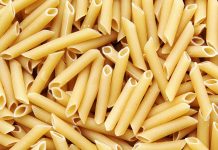1.Introduction

The use of wine wastes is one of the main challenges of the winemaking sector, not only for the economic cost that represents their disposal, but also due to the environmental impact on the environment. The European Parliament in Directive 2008/98/EC states that “waste prevention should be the first priority in waste management, and that re-use and recycling of materials should have priority over energy recovery from waste”. Thus, the grape marc is one of the main waste produced during the harvest season and therefore requires efforts to be used efficiently. Grape marc comes mainly from winemaking process, although the 14% production coming from the juice industry should be also taken into account. Currently this waste is used industrially in distilleries and to a lesser extent, for the production of tartaric acid and organic fertilizer. However, the skins, seeds and stalks contained in the marc are far from being fully exploited. It has been shown that approximately 40% of the compounds with an industrial interest contained in the skins (pigments, phenolic compounds, aromas, antioxidants, etc.) remain attached to their cell structure even after long maceration (Figure 1). This means that the skins of grapes, far from being a waste, are a commodity that requires study for exploitation. One of the reasons for not exploiting grape wastes is the associated cost of processing which implies a dehydration-extraction-concentration technology. Especially relevant is their dehydration process, since grape marc shows a high moisture content (45-50%), which means a rapid deterioration in a short period of time. In this sense Pedroza et al. (2012) studied the dehydration of grape marc at bench and industrial scale to prolong its shelf-life and facilitate the extraction of substances with industrial interest.

The results of this work have shown that, using an industrial hot air dryer at 60 °C, it can preserve the composition and properties of the skins reducing the moisture content to 12% (Figure 2). This moisture reduction prevents deterioration caused by microorganisms and improves significantly the logistical tasks in storage and transportation. Additionally, once the skins have been dried, the separation of skins, seeds and scrape by physical means is provided, so that a wide variety of value added products are obtained. Recent works (Amendola et al., 2010; Corrales et al., 2008; Lalka et al., 2007; Spigno et al., 2007; Pedroza et al., 2015) have focused on the characterization and exhaustive extraction of winery wastes, evaluating different extraction methods, solvents and extraction conditions (temperature, solvent-to-solid ratio, etc) in terms of the phenolic composition. In addition, the obvious differences in the composition of grape varieties and the sample processing origin (winemaking, fresh, juice processing, viticultural zone, among others) have significant impact on the reported extraction yields. A main drawback of these works is that the extraction efficiency is not evaluated as a function of the amount of substances left in solids after the extraction procedure. Capability of such technology to deal with a large volume of raw material during a short period of time (harvest season) is a limiting factor, given the perishable characteristics of grape pomace. Applications in the food industry as raw material or as an ingredient are still scarce even though extracts have been applied as natural preservatives in fruit juice (Sagdic et al., 2011); rapeseed oil (Mildner-Szkudlarz et al., 2010); fruit candies (Cappa et al., 2015); tomate puree (Lavelli et al., 2014; Torri et al., 2015); tea (Cheng et al., 2010) and cheese (Han et al., 2011).
2.Approach to the use as enological additive
The use of additives is becoming a common practice in the wine industry for improving the sensory profile of wines in order to make them more competitive and to reduce defects. Wood chips, enzymes or enological tannins are some examples of internationally approved enological practices (OIV, 2012), which modify the composition and sensory characteristics of wines. On the other hand, other products obtained from grape skins like additive E-163, also known as Anthocyanins or Enocyanin, are currently globally commercialized for use in the food industry. Revalorization of dehydrated waste grape skins (DWGS) by transforming them into an innovative enological product for enhancing the color, phenolic and aroma profile of wines has been proposed by Pedroza et al. (2011). Besides, a direct addition strategy of the waste grape skins into wine was selected for avoiding the use of intermediate extraction steps. The impact of adding DWGS directly into wine was first characterized into model wine solutions (Pedroza et al., 2011), considering critical extraction parameters such as maceration time, dosage, particle size, temperature and alcohol content of wines. Maceration time was the factor regulating anthocyanins release while dosage was particularly important for low molecular weight phenolic compounds extraction. Cellar conditions of temperature and alcohol content had a minor influence on the extraction behaviour.
 2.1.Addition of DWGS to white wines to increase their quality characteristics as rose wine
2.1.Addition of DWGS to white wines to increase their quality characteristics as rose wine
Selected parameters for releasing color phenolic and aroma compounds were used for transforming white wines into rosé wines (Pedroza et al., 2011). The most significant compounds release were anthocyanins, and low molecular weight phenolic compounds such as such as t-resveratrol, quercetin and (+)-catechin. Although the skins have a discrete volatile composition, they were found to be a major source of β-ionone (floral notes powerful odorant), since this compound is released in concentrations above the threshold of olfactory perception. This approach has a special relevance when high production of white wines occurs, which are not always commercialized, leading to accumulation and loss of quality attributes during storage. Addition of DWGS may, then, help white wine producers to:
- Diversify their stock of wine, destining any share of white wine to rosé wine and adapting to market demands.
- Deliver rosé wines on demand, offering different styles from light colored-rosés, to deep-red rosés by controlling the maceration times and using a low dosage of DWGS. The stability and storage features of DWGS may facilitate production of rosé wines at any moment.
- Guarantee the content of phenolic compounds and antioxidants by controlling maceration parameters of DWGS, enhancing nutritional content of wines.
- Prevente premature oxidation in rosé wines by adding DWGS to white wines before bottling.
Other types of white wines, like sparkling wines, may also use DWGS prior bottling for preventing premature color degradation.
2.2.Addition of DWGS to red wines to increase their quality characteristics
Pedroza et al. (2013) carried out different tests on red wines in order to compensate color degradation caused during storage and to enhance their low molecular weight phenolic profile. Preliminary results of this study suggest that the dehydrated skins may be useful for correcting color moderate losses and to increase the concentration of bioactive compounds (e.g. t-resveratrol, quercetin, (+)catechin), favoring their commercial expectations. The diversity of grape varieties used in the industry represents a feature of great potential, and even greater significance in the context of nutraceutical drinks and other products derived from wine with great demand today, showing the potential of:
- Enhancing color parameters of young and aged wines for at least 6 months.
- Releasing significant amount of low molecular weight phenolic compounds related with antioxidant properties of red wines.
- Adjusting the composition of compounds related to astringency.
- Preserving antioxidants by extracting them just before bottling, therefore skipping the fermentative and post-fermentative oxidation.
Moreover, the use of DWGS from different grape varieties was an interesting alternative to generate complementary mixtures with balanced profiles of pigments and antioxidants. Although the evaluated grape skins had a discrete contribution to aroma, the use of other regionally available aromatic varieties shall offer a more effective tool to enhance wine aroma. Further applications for developing innovative beverages or incorporate DWGS as functional ingredients for foodstuffs might be of particular interest to the industry and may lead the transformation of waste grape skins into a strategical byproduct for the enological sector. These application schemes contribute to offer alternatives for reuse of waste grape skins. Nevertheless, regulatory authorization is a fundamental step still pending for commercializing DWGS.
By Amaya Zalacain*
*Universidad de Castilla-La Mancha. E.T.S.I. Agrónomos y Montes. Cátedra de Química Agrícola. Albacete, Spain. Amaya.Zalacain@uclm.es
References
Amendola D., De Faveri D. M., Spigno G., 2010. Grape marc phenolics: Extraction kinetics, quality and stability of extracts. Journal of Food Engineering 97, 384-392
Cappa, C., Lavelli, V., Mariotti, M., 2015. Fruit candies enriched with grape skin powders: Physicochemical properties. LWT – Food Science and Technology 62 (1), 569-575
Cheng, V.J., Bekhit, A.E.A., Sedcole, R., Hamid, N., 2010. The impact of grape skin bioactive functionality information on the acceptability of tea infusions made from wine by-products. Journal of Food Science 75 (4), S167-S172
Corrales, M., Toepfl, S., Butz, P., Knorr, D., Tauscher, B., 2008. Extraction of anthocyanins from grape by-products assisted by ultrasonics, high hydrostatic pressure or pulsed electric fields: A comparison. Innovative Food Science & Emerging Technologies 9, 85-91
Han, J., Britten, M., St-Gelais, D., Champagne, C.P., Fustier, P., Salmieri, S, Lacroix, M. 2011. Polyphenolic compounds as functional ingredients in cheese. Food Chemistry 124(4), 1589-1594
Lafka, T.I., Sinanoglou, V., Lazos E.S., (2007). On the extraction and antioxidant activity of phenolic ompounds from winery wastes. Food Chemistry, 104, 1206-1214
Lavelli, V., Sri Harsha, P.S.C., Torri L., Zeppa G., 2014. Use of winemaking by-products as an ingredient for tomato puree: The effect of particle size on product quality. Food Chemistry 152, 162-168
Mildner-Szkudlarz, S., Zawirska-Wojtasiak, R., Gośliński, M., 2010. Phenolic compounds from winemaking waste and its antioxidant activity towards oxidation of rapeseed oil. International Journal of Food Science and Technolology 45(11), 2272-2280
Pedroza, M.A., Amendola, D., Maggi, L., Zalacain, A., De Faveri, D.M., Spigno, G., 2015. Microwave Assisted Extraction of Phenolic Compounds from Dried Waste Grape Skins. International Journal Food Engineering 11(3), 359-370
Pedroza, M.A., Carmona, M., Alonso, G.L., Salinas, M.R., Zalacain A., 2013. Pre-bottling use of dehydrated waste grape skins to improve color, phenolic and aroma composition of red wines. Food Chemistry 136, 224-236
Pedroza, M.A., Carmona, M., Pardo, F., Salinas, M.R., Zalacain, A., 2012. Waste grape skins thermal dehydration: Potential release of colour, phenolic and aroma compounds into wine. Journal of Food 10(3), 225-234
Pedroza, M.A., Carmona, M., Salinas, M.R., Zalacain, A., 2011. Use of dehydrated waste grape skins as a natural additive for producing rosé wines: study of extraction conditions and evolution. Journal of Agriculture and Food Chemistry 59, 10976-10986
Sagdic, O., Ozturk, I., Ozkan, G., Yetim, H., Ekici, L., Yilmaz, M.T., 2011. RP-HPLC-DAD analysis of phenolic compounds in pomace extracts from five grape cultivars: Evaluation of their antioxidant, antiradical and antifungal activities in orange and apple juices. Food Chemistry 126(4), 1749-1758
Spigno, G., Tramelli, L., De Faveri, D.M., 2007. Effects of extraction time, temperature and solvent on concentration and antioxidant activity of grape marc phenolics. Journal of Food Engineering 81, 200-208
Torri, L., Piochi, M., Lavelli, V., Monteleone, E., 2015. Descriptive sensory analysis and consumers’ preference for dietary fibre- and polyphenol-enriched tomato purees obtained using winery by-products. LWT – Food Science and Technology 62 (1), 294-300





